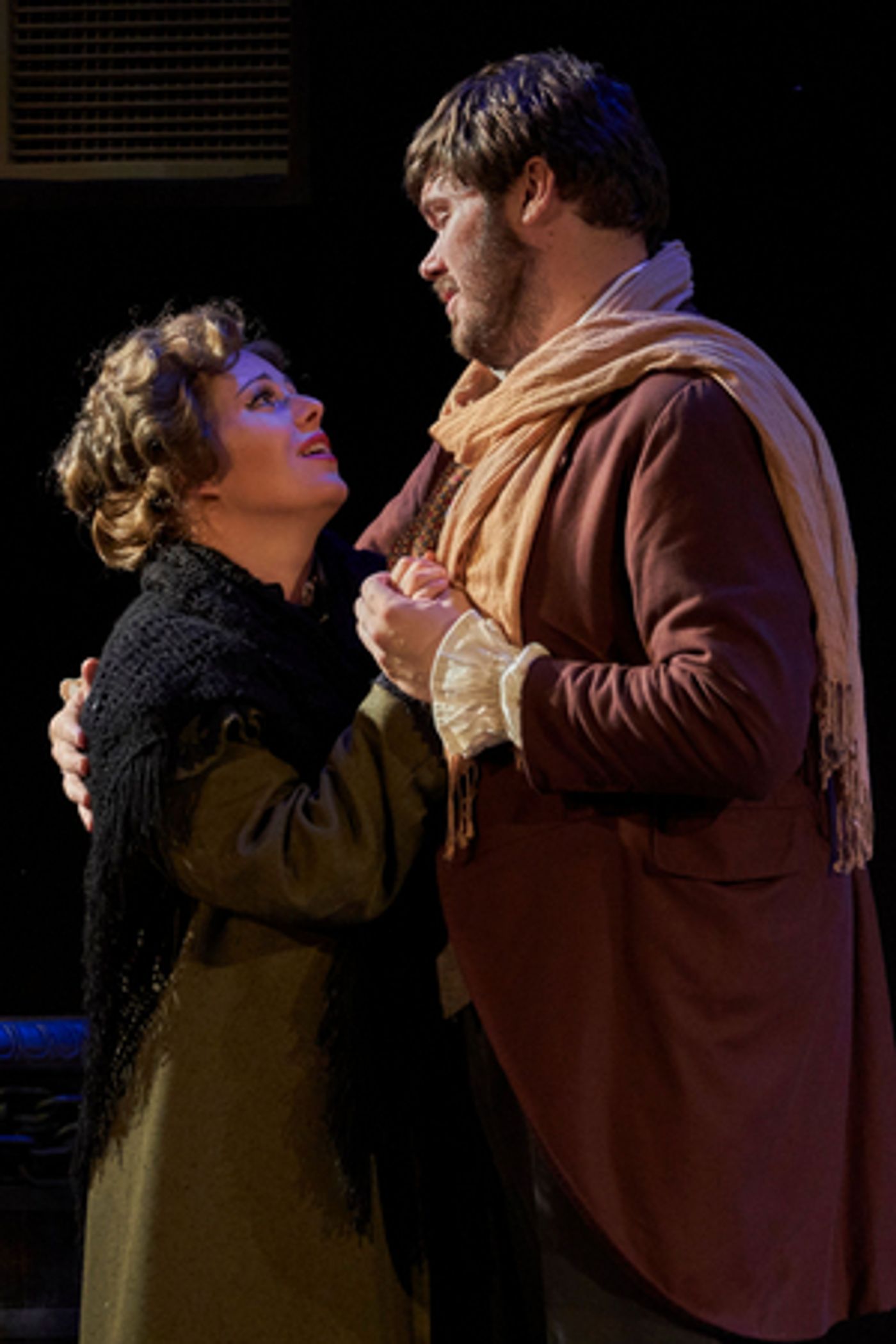Review: LA BOHEME at Union Avenue Opera

Union Avenue Opera is on a roll! Two homers in a row! First their sublime Candide, and now an equally fine production of Puccini's La bohème. Union Avenue knocked them both right into the bleachers, and those of us who were lucky enough to catch one of those prize performances now own a true treasure. I caught La bohème last night and I think I'll have that experience bronzed.
As in Union Avenue's Candide their La bohème is enriched by a remarkable pair of voices in the leading romantic roles. I've always been amazed at the vocal quality appearing on the stage of this small company. This season the voices are better than ever. Where, oh where do they find such singers? Well here our Rodolfo and Mimi come from as close as Chicago and as far away as the Ukraine.
You know the story: Paris, the 1830's, Christmas Eve. We meet Rodolfo (a poet), Marcello (a painter), Colline (a philosopher) and Schaunard (a musician). These friends are the classic "starving artists". They share a freezing garret and what little money, food, wine and merriment fate brings them. Into their stove they toss bits of furniture or pages of play-script to snatch a moment or two of warmth. His friends go off to a party at a café as Rodolfo stays to finish an article. Then a tap at the door-and in walks a stranger, Mimi, begging a light for her candle. She's an impoverished seamstress-and she's dying of tuberculosis. In a few moments she becomes the love of Rodolfo's life. That love is quickly returned.
The plot follows the course of two loves: that deep, total love of Rodolfo and Mimi; and the passionate but volatile and fractious on-again-off-again love of Marcello and the vivacious Musetta. One love is tragic, the other essentially comic.
And in the end, of course, Mimi dies most pathetically.
To the role of Rodolfo tenor Jesse Donner brings a clear, strong voice with the subtlest hint of vibrato which lends a lovely emotional intensity. Yulia Lysenko, as Mimi, shows beautiful bright vocal power and remarkable control of dynamics. These two are also very fine actors. Miss Lysenko is captivatingly innocent and lovely as she introduces herself in "Mi chiamano Mimi". Donner's aria "Che gelita manina", as he warm's Mimi's frozen little hand, is achingly beautiful. And the two are ravishing in their first duet, "O soave fanciulla" ("Oh, lovely girl"), their fine voices soaring upwards in a sweep of romance. Miss Lysenko is so physically graceful that moments that might have been melodrama are transformed into gentle pathos.
The four room-mates have wonderfully matching, yet varied voices: Marcello is sung by Andrew Wannigman whose engaging baritone is accompanied by a fine dramatic skill. Isaiah Musik-Ayala sings the philosopher Colline with a powerful, dramatic bass which could in other circumstances be menacing. His love-song to his old overcoat is a sweet and endearing eccentric gem. (Another wardrobe-related charmer is Mimi's song to her pink bonnet.) Schaunard is sung by Nicholas Ward, a fine baritone who also has a quite wonderful comic gift.
The vivacious, flirtatious Musetta is the brightest role in this opera, and she properly makes her entrance to the party wearing vivid crimson. Soprano Cree Carrico fills the role with brilliant energy and attitude. In her waltz aria "Quando m'en vo'" she flaunts her pleasure in drawing men's eyes and desires-and Miss Carrico absolutely nails it!
Musetta arrives at the party with her Sugar Daddy, Alcindoro. (He wears a long scarf matching her dress-as if she had tagged him as her own.) As Alcindoro bass E. Scott Levin does excellent vocal-and comic work. (He brings equal skill to the role of Benoit, the foolish old landlord of the starving artists.)
Lastly I must praise tenor Dale Obermark, who beautifully sings the role of Parpignol, the toy-vendor.
There is a delightful children's chorus (under its Chorus Master Alice Nelson) which does lovely work traipsing on in the train of Parpignol.
Stage Director Mark Freiman again shows his mastery of a large cast. Not only are the principals moved and positioned deftly, but the busy crowd scene at the café is given careful, meticulous detail.
The small stage at Union Avenue Opera (literally the nave of the church) makes it a wonderfully intimate venue for opera but a real challenge to scene designers. Patrick Huber, who designed both set and lights, works miracles for this production. We see the freezing garret with a great window overlooking a vast panorama of Paris. Then we go to the crowded Café Momus, then to a wonderfully snowy street outside a tavern, then back to the garret. (The Act III snow, by the way, is the most convincing, loveliest snowfall I've ever seen on stage.) It's all very fine.
There is about six inches of wing-space at UAO so the units of scenery are very cleverly re-configured.
Costumer Teresa Doggett once again gives spot-on perfection for every single role in this large cast.
La bohème is perhaps the most popular opera ever. Even if you've seen it before (and who hasn't?) you should visit Union Avenue Opera's production. You'll never hear finer voices and the dramatic interpretation will bring you a warm, deep understanding of the drama behind those glorious voices. It continues at Union Avenue Opera through August 3.
Enter Your Article Text Here!
Reader Reviews
Videos

